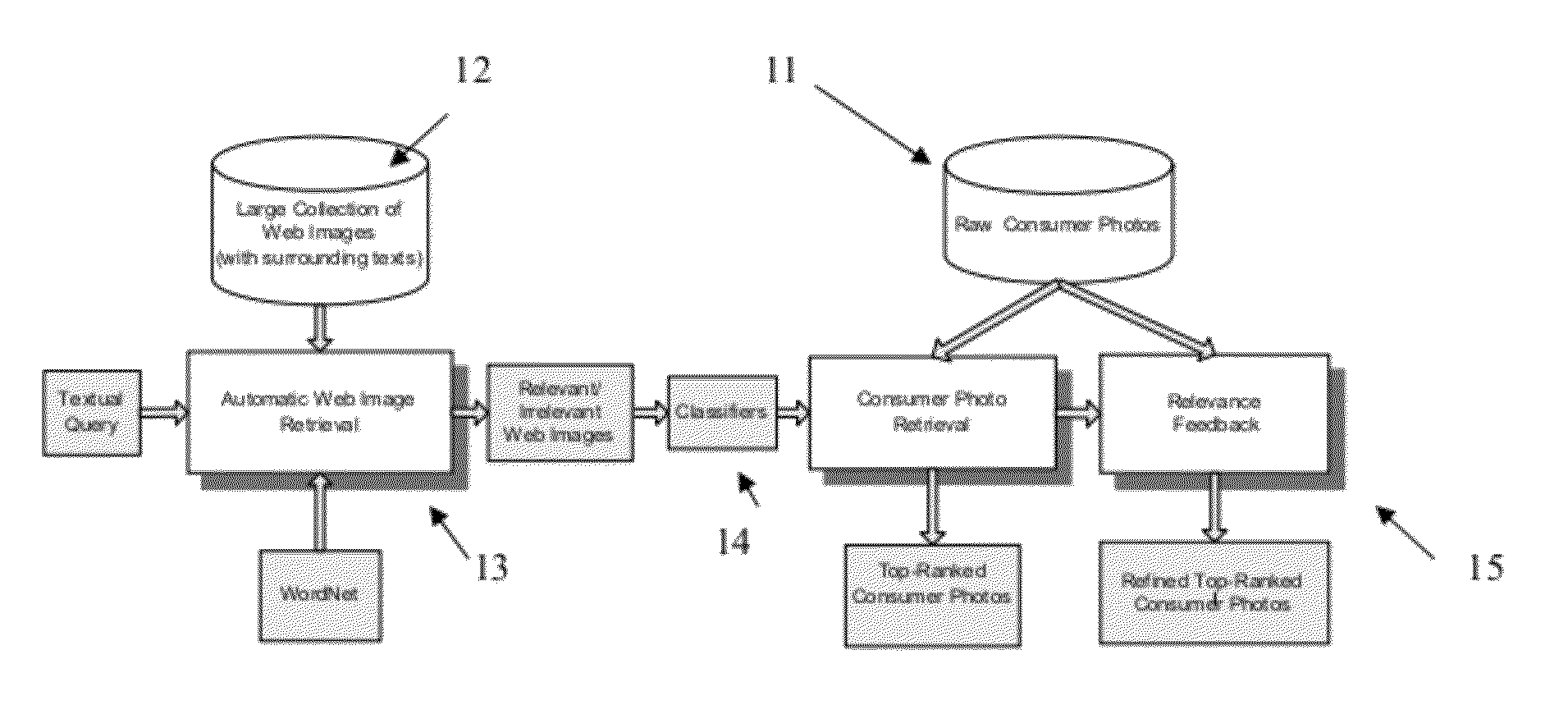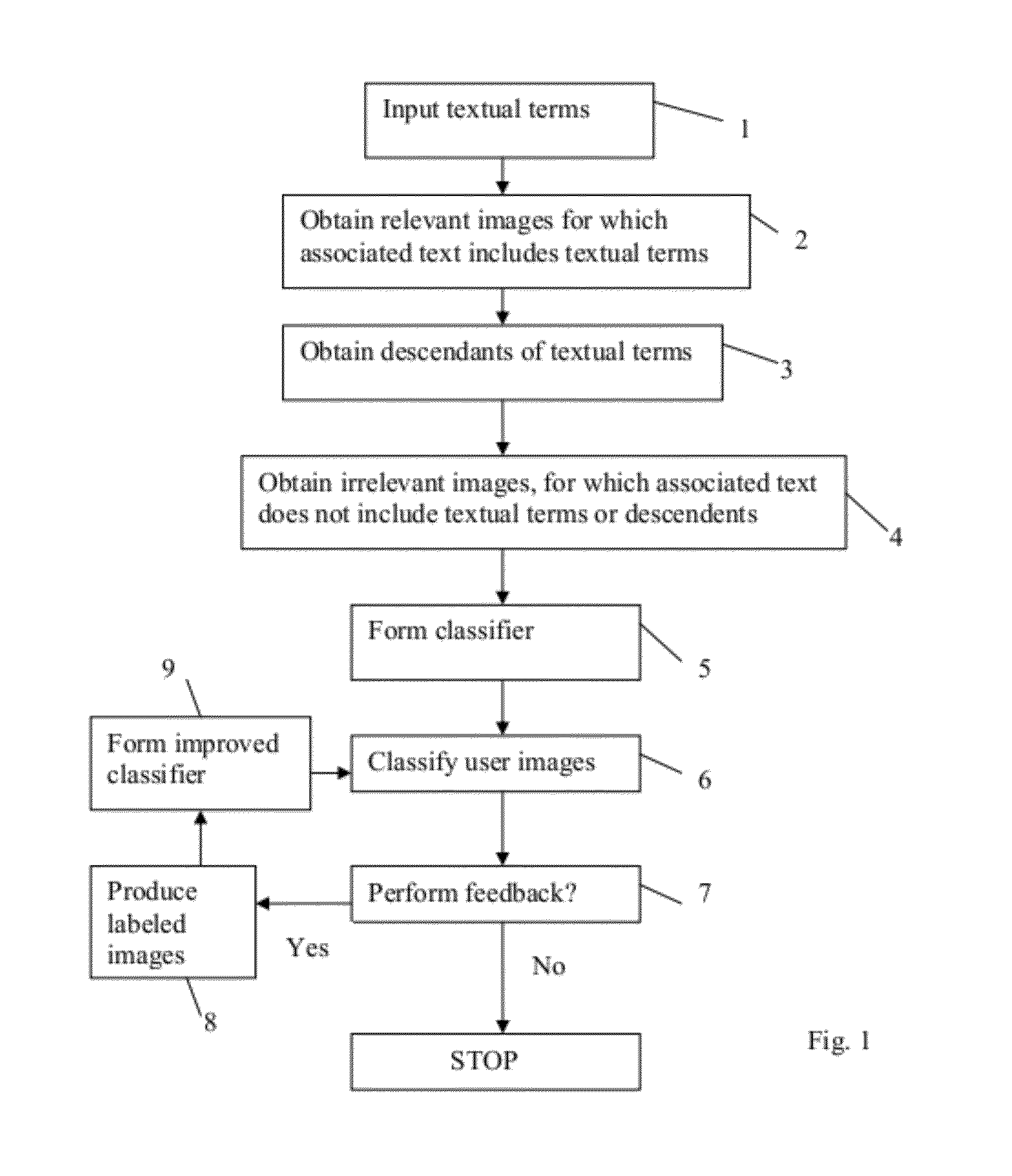Textual query based multimedia retrieval system
a multimedia retrieval and multimedia technology, applied in the field of textual query based multimedia retrieval system, can solve the problems of inability to perform in real time, cannot directly use google image search cannot be directly used to perform textual query within a user's own photo collection, so as to achieve fast-enough training process
- Summary
- Abstract
- Description
- Claims
- Application Information
AI Technical Summary
Benefits of technology
Problems solved by technology
Method used
Image
Examples
Embodiment Construction
[0025]Embodiments of the invention will not be described, purely for the sake of example, with reference to the following drawings, in which:
[0026]FIG. 1 is a flow diagram showing the steps of a method which is an embodiment of the invention;
[0027]FIG. 2 is a diagram showing the structure of a system which performs the method of FIG. 1;
[0028]FIG. 3 illustrates how the WordNet database forms associations between textual terms;
[0029]FIG. 4 shows the sub-steps of a first possible implementation of one of the steps of the method of FIG. 1;
[0030]FIG. 5 is numerical data obtained using the method of FIG. 1, illustrating for each of six forms of classifier engine, the retrieval precision which was obtained, measured for the top 20, top 30, top 40, top 50, top 60 and top 70 images;
[0031]FIG. 6 illustrates the top-10 initial retrieval results for a query using the term “water” on the Kodak dataset; and
[0032]FIG. 7 is composed of FIG. 7(a) which illustrates the top 10 initial results from an ...
PUM
 Login to View More
Login to View More Abstract
Description
Claims
Application Information
 Login to View More
Login to View More - R&D
- Intellectual Property
- Life Sciences
- Materials
- Tech Scout
- Unparalleled Data Quality
- Higher Quality Content
- 60% Fewer Hallucinations
Browse by: Latest US Patents, China's latest patents, Technical Efficacy Thesaurus, Application Domain, Technology Topic, Popular Technical Reports.
© 2025 PatSnap. All rights reserved.Legal|Privacy policy|Modern Slavery Act Transparency Statement|Sitemap|About US| Contact US: help@patsnap.com



